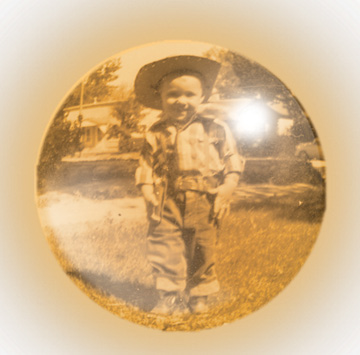Volume 25 · Number 2 · Winter 2008

Memory and Children
How accurate are children’s memories and would you believe them in a court of law?
When Gail Goodman, distinguished professor of psychology, began asking those kinds of questions in the 1980s, she found few scientific studies on the reliability of child eyewitnesses. Her subsequent research findings on children’s truthfulness would put her in the center of debate over a number of sensational child-abuse cases and eventually would be cited in U.S. Supreme Court decisions.
Goodman found that while children’s memories, like those of adults, could be tainted by coercive questioning, children as young as 4 or 5 can resist false abuse suggestions under a variety of circumstances. “In our work, we find that kids are surprisingly accurate,” she said.
Her work, in addition to helping the courts, contributed to efforts to improve interviewing methods in child-abuse cases, as well as advancing basic understanding of human memory development.
Goodman joined the UC Davis faculty in 1992 and, in recent years, has been joined by a number of colleagues who study development of memory and cognition. These researchers are using a number of novel studies to reveal how young children think and remember, become aware of their own thoughts and memories, and distinguish between true memories and events that never happened.
That expertise in child memory is what led Simona Ghetti, Ph.D. ’01, to choose UC Davis for her doctoral studies, but she said the broader breadth of the faculty gave her studies added benefit. “Because there was a good memory group, I think I’ve been exposed to more adult memory research than a typical developmental memory psychologist would,” she said. “I don’t believe that’s super common among many colleges.”
After four years as a research professor in Italy, Ghetti returned to UC Davis in 2005 to join the psychology faculty and the Center for Mind and Brain. Her research focuses on the development of memory in healthy and diabetic children and “metamemory,” or how children become aware of their own memory states.
Working with children as young as 3, Ghetti uses some novel techniques—teaching youngsters to communicate their confidence in their answers to her questions using pictures rather than words.
She has found that, as early as age 4, children can distinguish the quality of their memories. “They express higher levels of confidence for accurate memories compared with inaccurate memories.”
Such ability is important in making decisions. “If you know you bought milk yesterday, you’re not going to buy it again,” Ghetti said.
Her lab also studies false memory and what she calls “negative memory”—how we use memory, or lack of memory, to determine whether we experienced an event or not. In a series of studies, she has found that young children use different strategies than do older children and adults in distinguishing true from false memories.
By age 9, children assess the expected memorability of an event in answering questions like whether in their past they went on a trip or suffered an injury. Ghetti said that, like adults, they answer, “If it happened, I would remember that.”
But younger children tend to rely on more concrete evidence. “A 7-year-old would say, ‘If I fell off a tree, I would have a scar. If I went to the Grand Canyon, I would have pictures. If I had broken my arm, my mom would have told me.’”
At the same time, older children and adults can be quicker to make inferences and create false memories. In one experiment, Ghetti showed children and adults a series of photos about an ordinary event such as a trip to the grocery store, with one photo showing an occurrence but not what led up to it—such as oranges spilled on the floor.
“Adults are more likely to remember the hand going into the middle of the pile of oranges and taking it out,” she said. “Young children didn’t do that.”
Such difference in thinking may reflect changes occurring in the brain as children grow up, she said. Neuroimaging studies have found that while children use the same brain regions as adults do when remembering, those regions act in less specialized ways.
Ghetti’s team is also using neuroimaging studies to identify how changes in the brain as children mature relate to their abilities to recall memories and distinguish between true and false memories.
Memory functioning shows much continuity during the course of development, Ghetti said. But some mechanisms seem to work differently in children than adults. “We’re interested to learn how these mechanisms differ.”
— Kathleen Holder
